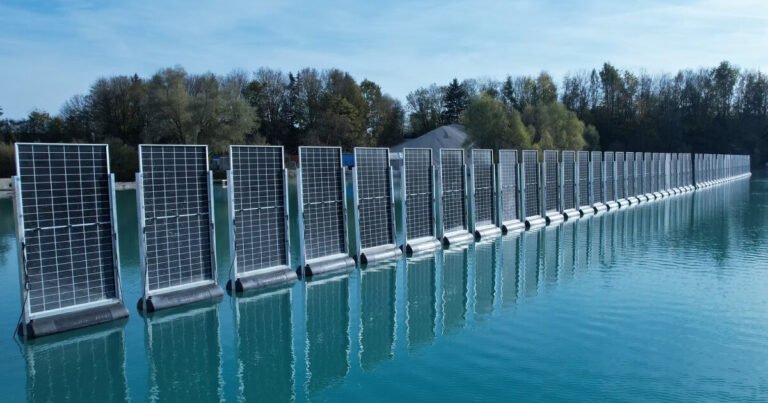Thermal Batteries: Slashing Storage Costs by Up to 60%—A Real-World Revolution
Thermal batteries — sometimes called heat batteries or thermal energy storage — are no longer a science-fair idea. Over the past three years, they have transitioned from lab benches to factories, hotels, and pilot plants, and the numbers now tell a clear economic story: in many applications, thermal storage can be significantly cheaper than storing electricity in lithium-ion batteries. According to Energy Innovation, thermal batteries can reduce the cost of electrifying industrial heating by approximately 50–63% compared to current approaches, making electric heat more competitive with natural-gas equipment.
The California Energy Commission recently published the results of a large pilot with a sulfur-based thermal battery and found that, in some locations where off-peak power is common, the levelized cost of electricity from that system worked out to roughly $0.08–$0.12 per kilowatt-hour — cheaper than the $0.15–$0.18 per kilowatt-hour range reported for comparable lithium-ion installations in that scenario. That gap is what people mean when they say thermal batteries can “slash” storage costs.
Those published comparisons are more than theory. Homeowners, hotels and grid developers are already reporting real money saved when they use heat-based storage to shift electricity use away from peak hours. A Washington Post profile of a homeowner in California showed the owner reducing bills and relying far less on gas after switching to a combined heat-pump and storage tank system; the company behind the product says typical household savings run 20–30% on utility bills, and emissions drop sharply.

Real Projects are Proving the Promise
Across Europe and North America, pilot plants and commercial demonstrations are multiplying. Malta Inc., a startup spun out of Alphabet’s X, has signed agreements for a 14 MWh commercial demonstration in Spain that will store heat in molten salt and later use it to make steam and electricity — a design that aims to deliver low cost and the added option of usable industrial heat. According to Malta, the steam-based system is intended to work as a like-for-like, low-carbon replacement for fossil plants.
Hotels and buildings offer an easier path to early deployment because they need steady heat or cooling every day. According to a Time.com report, Nostromo Energy’s IceBrick system — which makes ice at night using cheap power and then uses that stored cold to cool large hotels during the day — has shown savings of 30–50% for participating properties and has qualified as a demand-response resource in California. That kind of project reduces peak load on the grid and cuts operating costs for big energy users.
On the industrial side, Element 16’s molten-sulfur pilots in California demonstrated practical charge and discharge cycles and modelled payback times for commercial buildings; the same California Energy Commission program that examined sulfur storage also estimated meaningful natural-gas savings and significant CO₂ reductions for commercial installations. These are not laboratory numbers — they come from working systems sized for real customers.
A growing set of technology approaches is under test: molten salts and molten silicon for very high temperatures, graphite and bricks for high-temperature industrial heat, and ice or chilled water for cooling. Research groups at MIT and several startups are showing different trade-offs: very high-temperature molten-silicon ideas promise extreme energy density and very low material costs at scale, while lower-temperature rock or brick systems can be cheaper to build today and integrate well into factories.
How the Technology Works and Why it Costs Less
At its simplest, a thermal battery charges by using electricity (ideally, cheap, off-peak renewable power) to heat a storage medium. Later, that stored heat is used directly for industrial processes, turned into steam to run turbines, or converted back to electricity with a heat engine or thermophotovoltaic converter. The storage medium could be molten salt, molten silicon, graphite, crushed rock, bricks, or even water/ice for cooling. Materials are chosen for low cost, durability and how well they hold heat.
There are three linked reasons thermal systems often beat batteries on price. First, the materials can be extremely cheap and abundant — sand, salt, silicon, or rocks — so the large, long-duration part of the system is mostly low-cost mass. Second, thermal systems can be engineered to have very long lifetimes with little degradation, so capital costs amortise over many years. Third, when a system is used to provide heat (not only electricity), it replaces both fuel and separate heat equipment, stacking value in one plant. This combination can make the delivered energy cheaper than what you’d get from a lithium pack plus a boiler. A report commissioned by the U.S. Department of Energy and recent modelling work have shown thermal solutions with projected levelized costs well below many battery projections in long-duration scenarios.
To make these ideas tangible, here are representative cost comparisons drawn from public studies and pilots in the field:
| Technology | Representative reported cost (per kWh delivered) | Source |
|---|---|---|
| Sulfur thermal battery (pilot LCOE range) | $0.08–$0.12 / kWh_e | A report by the California Energy Commission, 2025 |
| Lithium-ion (comparable system scenario) | $0.15–$0.18 / kWh_e | ✓✓ |
| Industrial thermal battery (cost reduction vs gas) | 50–63% lower heating cost in modelled scenarios | According to Energy Innovation, 2023. |
| Low-cost thermal battery LCOS projection | <$20 / kWh (in some DOE case studies) | A report by the U.S. Department of Energy, 2024. |
Those numbers do not mean thermal batteries are always cheaper in every application. The economics depend on local electricity prices, whether there is a steady need for heat or cooling, available incentives, and grid tariffs. But the table shows why industry and utilities are taking the technology seriously: in the right use cases, thermal storage materially lowers the cost of running a plant or a building.
What This Mean for the Industry, Homes and the Grid
For factories that need high-temperature heat — steel, cement, chemicals — thermal batteries are a practical path to stop burning fossil fuels for process heat. RMI and other technical groups have documented how industrial “heat batteries” let plants buy electricity during low-cost hours and release process heat when needed, cutting emissions while trimming fuel bills. That combination is what makes adoption attractive to CFOs, not just environmental managers.
For buildings, the story is practical and immediate. Systems that store hot water or ice already let hotels, office blocks and multi-family housing shift big loads off the evening peak. The Time and Washington Post reports on hotel ice systems and a homeowner switching to a Harvest Thermal system show the same pattern: savings on bills, a smaller carbon footprint, and potential new revenue streams when systems participate in demand-response programs. For many building owners, the payback comes from avoided peak charges and lower operating costs rather than just from wholesale electricity arbitrage.
For the grid, thermal batteries change the shape of demand. Instead of calling on fossil peaker plants during hot or cold evenings, the grid can rely on stored thermal energy released at scheduled times. That reduces stress, lowers emissions, and can cut the need for new transmission upgrades. As renewables grow, markets with strong time-of-use signals or frequent negative-price hours will especially favor heat-based storage. The California examples show this clearly: where electricity is sometimes very cheap, thermal systems push the delivered cost of heat or power down enough to beat batteries in some scenarios.
Voices from the field underline the realism of the opportunity. Asegun Henry, an MIT researcher working on molten-silicon concepts, argues that thermal storage can use low-cost materials and that high-temperature approaches can halve storage cost compared with the cheapest large-scale options today. Ramya Swaminathan, CEO of Malta, emphasises that combining power and heat output in one plant yields value that batteries alone cannot match — and that proven subsystems can make large thermal plants practical sooner than many expect.
Actionable advice
If you are a policymaker: stop treating energy storage as only “electric batteries.” Create procurement paths and incentives that value heat, industrial process flexibility and long-duration storage equally with short-duration electricity services. California’s recent pilot programs and DOE case studies show how targeted grants and demonstration funding speed commercialisation.
If you run a factory or large facility, run a pilot. Start with thermal needs you already have — steam, drying, or high-temperature kilns — and model the value of shifting those loads to low-cost hours. The Element 16 pilots show that integrating thermal batteries with existing processes is technically and economically feasible today.
If you manage a building or are a homeowner, evaluate heat-storage systems when you replace ageing HVAC or water-heating equipment. For many homes and smaller buildings, combined heat-pump + tank solutions (a home-scale thermal battery) deliver immediate bills and emissions savings, especially when paired with rooftop solar or time-of-use pricing.
If you are an investor or developer, focus on stacked value. The clearest commercial wins come when a single installation can provide heat and power, participate in demand-response markets, and reduce grid upgrade costs. Projects that deliver multiple revenue streams — industrial heat, grid services, and capacity relief — reach bankable returns much faster.
Learn More: Osmotic Power: Renewable Energy of the Future
Conclusion
Thermal batteries are not a future fantasy — they are a commercially proven tool today in a growing number of real projects. In the right places, they can cut bills, cut emissions, and take pressure off the grid. The next five years will be a testing ground: the pilot plants now being built in Spain, California, and elsewhere will show how big the savings can become when these systems reach scale. If the early public studies and demos are right, heat-based storage could reshape where and how we store energy — and do it for far less money than many expected.







